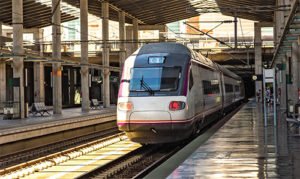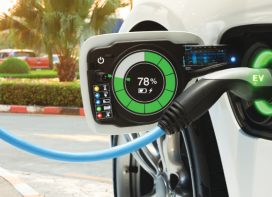 As Mobility Professionals, we have to try to stay aware of trends in our industry. Most of us were caught off-guard with the advent of transportation network companies (TNCs) such as Uber and Lyft and the impact they have had on curb space, traditional taxis, car-sharing, transit usage, parking demand, and traffic. What could be coming next that will affect our profession and industry Brian Shaw, Executive Director-Parking & Transportation, Stanford University, attempt to make some predictions
As Mobility Professionals, we have to try to stay aware of trends in our industry. Most of us were caught off-guard with the advent of transportation network companies (TNCs) such as Uber and Lyft and the impact they have had on curb space, traditional taxis, car-sharing, transit usage, parking demand, and traffic. What could be coming next that will affect our profession and industry Brian Shaw, Executive Director-Parking & Transportation, Stanford University, attempt to make some predictions
Electrification of Transit Fleets
Batteries continue to get better. Consistent range, performance, and safety have made moving bus transit to an electric platform feasible, viable, and cost-effective. China has led the way in this trend, and North American transit properties, universities, and airports have begun to transition their bus fleets to electric. Bus manufacturers have emerged who specialize in electric buses while also collaborating with traditional bus companies on conversions.
EV Charging?
Many of us have installed electricvehicle (EV) charging stations in our facilities. This may be due to a code requirement or as a way to attract EV owners to park in our facilities. But the range for EVs has dramatically improved; some EVs can go 100, 200, or more miles on a charge. Is EV charging still needed at worksites as battery range improves? Should EV charging be done at home, and should EV charging be free? Should fast or slow chargers be the option?
Transportation Network Companies
Is the growing use of Lyft and Uber a prelude to how life will be with autonomous vehicles (AVs)? Will we own cars in the future and need to park them? How should our facilities be designed and what features do they need if the vehicles can park them¬selves? For now, it may be prudent to develop staging areas for TNCs.
Pickup/Drop-off Curb Space
Given the increasing use of TNCs and the likely future advent of autonomous vehicles, our built environments will need to develop new design standards and operational use criteria to make the best use of limited curb space. Perhaps when parking demand declines, the curb space issue will be addressed by having fewer curbs in use for parking. At least for the foreseeable future, curb use and availability will remain a challenge.
Technology instead of Travel
In more urban and suburban areas, this could lead to a growing need for short-term loading zones to accommodate delivery activities. Commuters may commute less or to various remote locations to facilitate remote working/working from home, reducing demand for monthly permits and parking and increasing need for daily permits. Meetings may take place online with improving video conferencing, reducing mid-day trips and parking demand. Why go to the theater if you can see the next Oscar winner from home? If your dinner can be easily delivered from your favorite restaurant, why go out? This trend should reduce retail parking demand, but it will increase demand for curb and loading areas, particularly in urban settings.
 TrafficInfraTech Magazine Linking People Places & Progress
TrafficInfraTech Magazine Linking People Places & Progress


